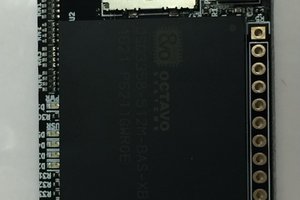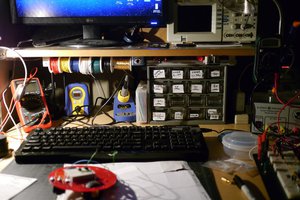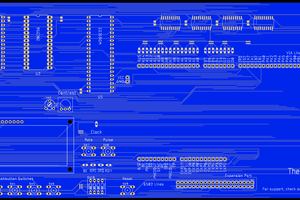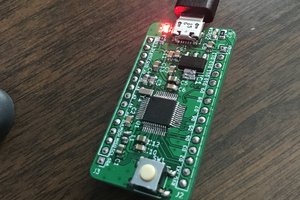Project PCBs were kindly sponsored by

All in One STM32 feather board with Radio capabilities (NRF24 and LORA)
To make the experience fit your profile, pick a username and tell us what interests you.
We found and based on your interests.
Project PCBs were kindly sponsored by
image_67140609.JPGSMD StencilJPEG Image - 1.47 MB - 04/03/2023 at 08:34 |
|
|
image_67148033.JPGPCB Panel - FrontJPEG Image - 1.43 MB - 04/03/2023 at 08:32 |
|
|
image_67113473.JPGBoards Delivery!JPEG Image - 1.10 MB - 04/03/2023 at 08:29 |
|
|
image_67177474.JPGPCB Panels - BackJPEG Image - 1.19 MB - 04/03/2023 at 08:29 |
|
|
stm32f3-featherx_bottom.pngBottom view of the latest board design (MK 2)Portable Network Graphics (PNG) - 269.24 kB - 02/28/2023 at 10:34 |
|
|
On my last update, about a month ago, I was in the process of preparing to send my board design for fabrication to the PCB prototyping provider. A lot has happened since then...
My first batch of boards, which still had a preliminary design, was done mostly to validate and de-risk the MCU schematic and routing. From what I learned from that batch a few issues were fixed in the current iteration. For that first iteragion I did contract both PCB prototyping and assembling, but this time because I want to produce a larger amount of boards I've decided to only contract the PCB prototyping and to buy all the required components to assemble the boards myself.
I did look into a possible PCB manufacturing providers and PCBWay came up on top amongst the options. To my surprise their Online Services Team saw this Hackaday.io project page and reached out to me offering to sponsor the PCB fabrication. Luckily that was just the perfect timing!
I did take their generous offer and sent my gerber files using their website and was blown away by their turnaround time: my boards were ready and shipped to me in a couple of days. The shipment was delivered a week or so later. My first impressions of the quality of the boards is really positive. I ordered 10 pairs and an SMD stencil. As can be seen on the attached photos they look top notch!
This is the top of the PCB panels:
This is the bottom of the panel:
And finally here is the SMD Stencil:
A couple more of pictures are available on the projects Gallery area.
While waiting for the boards to arrive I was searching for a components supplier and after preparing the BOM I ordered all the components to build all the 20 boards with some parts to spare. I am still awaiting on the delivery of the components so I have not been able to start assembling them yet.
Finally, I am working on adding this board to the Arduino-STM32 repository and Platform STSTM32 list of boards. Although that work was put on hold for a couple of weeks while I was moving houses, I am finally getting back to it. I suspect I will only be able to conclude the code changes once I have received the components and assembled at least a couple of boards to validate the source code, since the test boards I currently have are slightly different than this final version.
So that is it. In the next couple of weeks I should hopefully have more exciting updates (provided the components are delivered), after the last month hiatus.
Once again many thanks to PCBWay for kindly sponsoring my project's PCB prototyping. I will certainly use them for my future projects and likely put this project on their shared projects page once it is complete.
Talk soon. Cheers!
The last day I have been going back and forth making small changes to the board design in preparation to order the prototyping of 10 pieces.
Between fixing and checking board constrains as per the prototyping company specifications, cleaning and tiding up the silkscreen and panelising the board in pairs (since they are long but to narrow for individual fab)
Hopefully the prototyping can be kicked off soon.
Also I had to compile the BOM to prepare to put an order for the components. For the first prototype I ordered PCB assembly so I haven't need to solder the components myself, but this time to save on cost and for practice, I will be ordering a stencil from the PCB manufacturer and I'll attempt to assemble the board with my hot air station... we shall see :)
That is all for today updates, folks.
Cheers
The MK2 version of the board is complete, so it will be going to PCB prototyping soon. The latest changes include replacement of a couple chips that were hard to find, and also the use of the a slightly better MCU. The initial plan was to use have an STM32F302 but I ended up switching to the STM32F303, which has much more peripherals (OpAmps, extra SPI and I2S among others) in the same package and is also obtainable!
I have also been looking into the software required to have this board working in any Arduino like development environment (Arduino IDE and Platform IO) and realized that I will need submit a some changes to the STM32Duino repo on GitHub to get support for this board. Now that I have the final PCB design I can freeze the pin out mapping and get that going. Hopefully I can get through someone on that project.
Besides that the RadioHead library has only the option to use SPI1 for STM32 boards/MCUs, but my design is using the SPI2 for the RF modules so I am looking into submit some improvements to that library as well. Again depending on get in touch with the people on that project. That is still work in progress.
Until both this changes are working I can't easily test the RF interfaces on my MK1 version boards. But I have already the repos forked on my Github as well as the project set up on PlatformIO. As soon as I get those changes working I will post an update here, even though I think get those changes on the upstream repos might take some more convincing.
I am also thinking about recording some videos to upload to YT about some aspects of this project that could use more visual assistance to explain. That is on the back burner in the meantime.
That is all folks!
I have been tinkering on this design for a couple of months.
Currently I am working on the second revision of the board in KiCad, which has support for 3 RF modules, all of which are small enough and have IPX antennae connectors, so they can be soldered on top of this board
The first iteration was designed to have the NRF24 and LNA chip in board, but the cost benefit was low, since using modules make the board more versatile and cheaper.
Also there were some bugs on the electronic circuit of the first revision that required some bodge wiring and are addressed on the second revision.
I am still testing the integration with RF modules before considering the revision 2 ready for ordering from the PCB manufacturer.
I will make another post once I have gone through the integration test with the NRF24 module.
Create an account to leave a comment. Already have an account? Log In.
Become a member to follow this project and never miss any updates

 Michael Welling
Michael Welling
 PCB designer
PCB designer
 Josh Kittle
Josh Kittle
 sirmylesavery
sirmylesavery